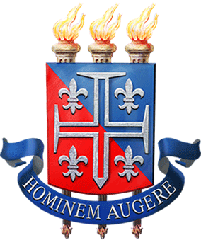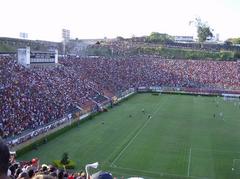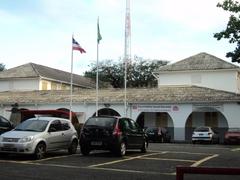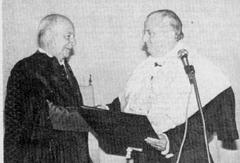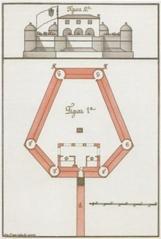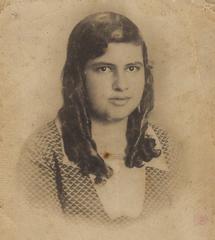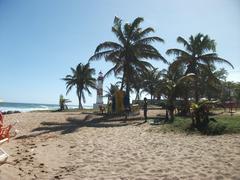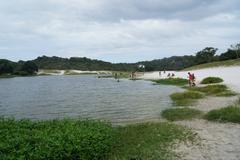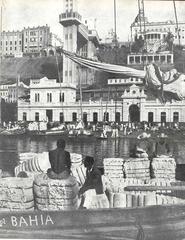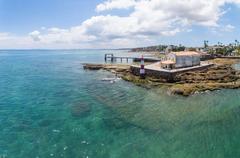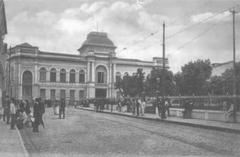Teatro Miguel Santana: Visiting Hours, Tickets, and Historical Significance in Salvador, Brazil
Date: 03/07/2025
Introduction
Teatro Miguel Santana, nestled in the heart of Salvador’s storied Pelourinho district, stands as a living testament to the city’s vibrant Afro-Brazilian heritage. As the permanent home of the internationally acclaimed Balé Folclórico da Bahia, the theater blends world-class performance with deep community engagement and cultural preservation. This guide details Teatro Miguel Santana’s visiting hours, ticketing, accessibility, and its essential role in Salvador’s historic and cultural landscape, ensuring you can plan a memorable and meaningful visit (The Rio Times; Balé Folclórico da Bahia Official; Pelourinho UNESCO).
The Historical and Cultural Context of Pelourinho
Pelourinho, Salvador’s UNESCO-listed historic center, dates back to the 16th century and is characterized by its cobblestone streets, pastel-colored colonial buildings, and baroque churches. Historically, the district was both a center of colonial wealth and the site of great suffering as the location of Brazil’s first slave market. Over time, Pelourinho has become a symbol of resilience, cultural fusion, and the enduring contributions of Afro-Brazilian communities to Salvador’s identity (The Rio Times; Pelourinho UNESCO).
By the late 20th century, Pelourinho underwent significant restoration, transforming into a vibrant cultural hub. Today, the neighborhood is renowned for its lively arts scene, open-air music, and dynamic street performances, making it the ideal home for Teatro Miguel Santana (The Rio Times; Pelourinho UNESCO).
The Founding and Evolution of Teatro Miguel Santana
Established in the late 20th century, Teatro Miguel Santana quickly became a cornerstone of Salvador’s cultural life. Named after a prominent Bahian cultural leader, the theater was designed for intimacy, with seating for around 100, fostering a close connection between artists and audience (Guia da Semana; Sou Salvador). Its central location at Rua Gregório de Matos, 49, places it in the artistic heart of Pelourinho (Salvador da Bahia).
In 1995, the renowned Balé Folclórico da Bahia made Teatro Miguel Santana its permanent home. A formal partnership with the state government followed in 2004, recognizing the company’s significant role in promoting Bahian culture. The theater has since undergone modernization—including digital sound and lighting upgrades—while maintaining its original charm (Sou Salvador; Pelourinho Dia e Noite).
Balé Folclórico da Bahia: Cultural Impact
Founded in 1988, Balé Folclórico da Bahia is Brazil’s only professional folk dance company dedicated to preserving and celebrating Afro-Brazilian traditions. Their repertoire includes capoeira, samba de roda, maculelê, and ritual dances from Candomblé, all performed with live percussion and vocals. The company has earned national and international acclaim, touring extensively and promoting Bahia’s cultural legacy worldwide (Salvador da Bahia; PowerTraveller).
Teatro Miguel Santana also serves as a center for social inclusion. Through outreach initiatives like Balé Junior and free dance workshops, the theater engages local youth and offers cultural education to the community, reinforcing Salvador’s status as a global center for Afro-diasporic culture (Pelourinho Dia e Noite; Aratu On).
Visiting Teatro Miguel Santana: Hours, Tickets, and Practical Tips
Visiting Hours
- Performances: Monday to Saturday, typically at 8:00 PM. (No shows on Sundays.)
- Box Office: Opens daily from 2:00 PM to 7:00 PM.
Tickets
- Prices: Usually range from R$60 to R$100, depending on seating and season. Discounts are available for students, seniors, and children.
- Where to Buy: Tickets can be purchased at the box office, online via the official website (Salvador da Bahia Official), or reserved by email ([email protected]), phone ((71) 3321-0025 / 3322-1962), or the company’s Instagram. Advance booking is highly recommended as performances often sell out.
Accessibility
- The theater is wheelchair accessible, with staff available to assist. Some areas may have steps due to the historic building, so advance notice for special accommodations is advised.
Visitor Facilities
- Restrooms are available on-site.
- Photography and video recording during shows are generally not permitted, but post-performance photos with artists are often possible.
Cultural Etiquette
- Smart-casual attire is encouraged.
- Audience participation, especially during samba de roda, is welcome and enhances the experience.
- Staff can assist in English and Spanish.
Travel Tips and Nearby Attractions
- Arrive at least 30 minutes before the show to secure your seat and explore the vibrant Pelourinho area.
- Combine your visit with nearby attractions such as São Francisco Church, Mercado Modelo, Museu Afro-Brasileiro, and Praça Terreiro de Jesus.
- The area is best explored on foot. Wear comfortable shoes for the cobblestone streets.
Community Engagement and Educational Initiatives
Teatro Miguel Santana, in collaboration with the Secretaria Municipal de Cultura e Turismo (Secult), offers free dance classes every Monday and Wednesday at 7:00 PM, open to all ages and skill levels. These classes, led by acclaimed masters, support intergenerational knowledge transfer and foster community pride (Aratu On).
The theater also offers guided backstage tours on weekends by appointment, providing insights into the creative process of the Balé Folclórico da Bahia and the theater’s history.
Economic and Social Impact
Teatro Miguel Santana is not just a cultural institution but also a driver of economic activity in Pelourinho. By attracting thousands of visitors annually, the theater supports local businesses, artisans, and the broader tourism economy. The city of Salvador has recognized its importance by investing in artist salaries, maintenance, and production, reinforcing the arts as a vehicle for urban revitalization and social inclusion (Brasil Travel).
Frequently Asked Questions (FAQ)
Q: What are the Teatro Miguel Santana visiting hours?
A: Performances are held Monday to Saturday at 8:00 PM. The box office is open from 2:00 PM to 7:00 PM.
Q: How can I buy tickets?
A: Purchase tickets at the theater’s box office, online via the official website, or reserve via email or phone.
Q: Is the theater accessible for visitors with disabilities?
A: Yes, with advance notice for special assistance.
Q: Are there guided tours or workshops?
A: Yes, backstage tours are available by appointment on weekends, and free community dance classes run twice weekly.
Q: What other attractions are nearby?
A: São Francisco Church, Museu Afro-Brasileiro, Praça Terreiro de Jesus, and the colorful streets of Pelourinho.
Visuals and Media
- Images: Exterior of Teatro Miguel Santana (“Teatro Miguel Santana facade in Pelourinho, Salvador”), Balé Folclórico da Bahia performance, map highlighting the theater’s location.
- Interactive: Consider embedding a virtual tour or short performance video for digital platforms.
Conclusion and Call to Action
Teatro Miguel Santana is a cornerstone of Salvador’s cultural scene, offering a unique blend of Afro-Brazilian tradition, community engagement, and immersive visitor experiences. Whether you’re attending a world-class performance, joining a dance workshop, or exploring the historic streets of Pelourinho, the theater promises an unforgettable journey into Bahia’s living heritage.
Plan your visit by checking hours, booking tickets in advance, and exploring Salvador’s historic center. For the latest updates on performances, workshops, and special events, follow Balé Folclórico da Bahia on Instagram and download the Audiala app for seamless access to Salvador’s cultural offerings.
Further Reading and Reliable Sources
- The Rio Times - Pelourinho Historical Center of Salvador
- Guia da Semana - Teatro Miguel Santana
- Sou Salvador - Teatro Miguel Santana
- Salvador da Bahia Official - Balé Folclórico da Bahia
- Pelourinho Dia e Noite - Balé Folclórico da Bahia and Teatro Miguel Santana
- Aratu On - Visiting Salvador’s Afro-Brazilian Heritage
- Brasil Travel - Teatro Miguel Santana and Cultural Tourism
- UNESCO - Pelourinho World Heritage Site

